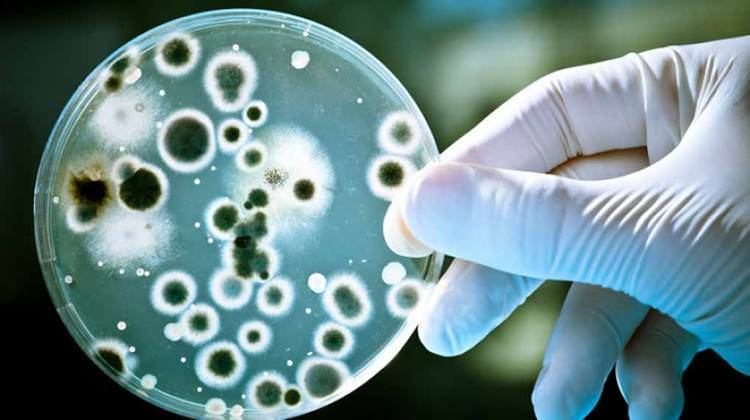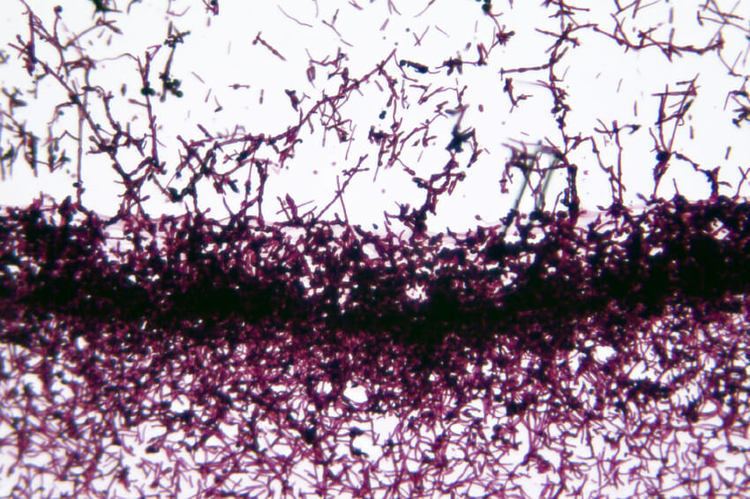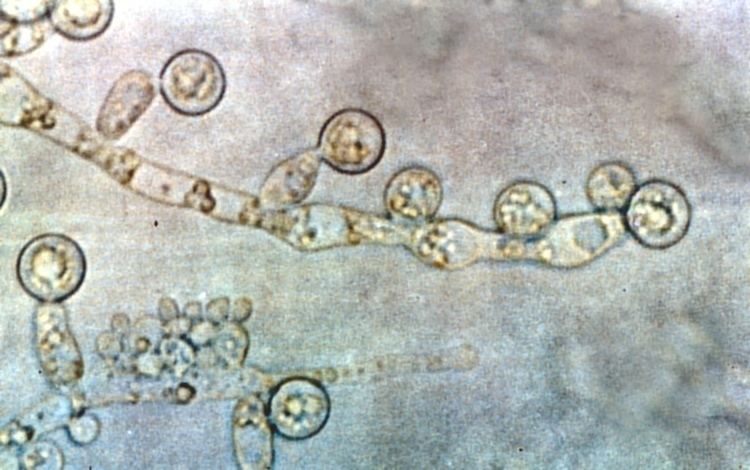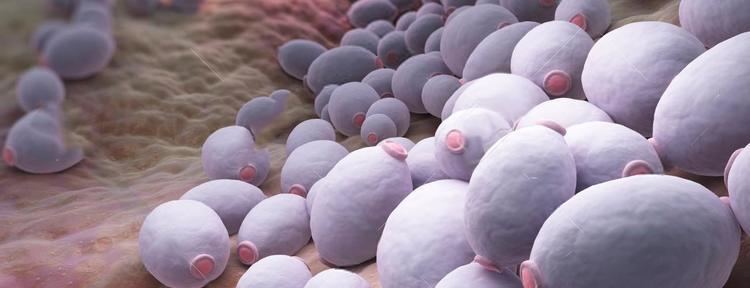Kingdom Fungi Scientific name Candida Rank Genus | Higher classification Saccharomycetaceae | |
Lower classifications Candida glabrata, Candida tropicalis, Candida parapsilosis, Issatchenkia orientalis, Candida dubliniensis | ||
Candida is a genus of yeasts and is the most common cause of fungal infections worldwide. Many species are harmless commensals or endosymbionts of hosts including humans; however, when mucosal barriers are disrupted or the immune system is compromised they can invade and cause disease. Candida albicans is the most commonly isolated species, and can cause infections (candidiasis or thrush) in humans and other animals. In winemaking, some species of Candida can potentially spoil wines.
Contents

Many species are found in gut flora, including C. albicans in mammalian hosts, whereas others live as endosymbionts in insect hosts. Systemic infections of the bloodstream and major organs (candidemia or invasive candidiasis), particularly in immunocompromised patients, affect over 90,000 people a year in the U.S.

The genome of several Candida species has been sequenced.
Antibiotics promote yeast infections, including gastrointestinal Candida overgrowth, and penetration of the GI mucosa. While women are more susceptible to genital yeast infections, men can also be infected. Certain factors, such as prolonged antibiotic use, increase the risk for both men and women. People with diabetes or impaired immune systems, such as those with HIV, are more susceptible to yeast infections.

Candida antarctica is a source of industrially important lipases.
Biology

When grown in a laboratory, Candida appears as large, round, white or cream (albicans means "whitish" in Latin) colonies, which emit a yeasty odor on agar plates at room temperature. C. albicans ferments glucose and maltose to acid and gas, sucrose to acid, and does not ferment lactose, which help to distinguish it from other Candida species.

Recent molecular phylogenetic studies show that the genus Candida as currently used is extremely polyphyletic (encompassing distantly related species that don't form a natural group). Before the advent of inexpensive molecular methods, yeasts that were isolated from infected patients were often called Candida without clear evidence of relationship to other Candida species. For example, Candida glabrata, Candida guilliermondii, and Candida lusitaniae are clearly misclassified and will be placed in other genera once phylogenetic reorganization is complete (for example, see ).

Some species of Candida use a non-standard genetic code in the translation of their nuclear genes into the amino acid sequences of polypeptides. The difference in the genetic code between species possessing the alternative code is that the codon CUG (normally encoding the amino acid leucine) is translated by the yeast as a different amino acid, serine. The alternative translation of the CUG codon in these species is due to a novel nucleic acid sequence in the serine-tRNA (ser-tRNACAG), which has a guanosine located at position 33, 5' to the anticodon. In all other tRNAs, this position is normally occupied by a pyrimidine (often uridine). This genetic code change is the only such known alteration in cytoplasmic mRNA, in both the prokaryotes, and the eukaryotes, involving the reassignment of a sense codon. This novel genetic code may be a mechanism for more rapid adaptation to the organism's environment, as well as playing an important role in the evolution of the genus Candida by creating genetic barriers that encouraged speciation
Pathogen

Candida are almost universal in low numbers on healthy adult skin and C. albicans is part of the normal flora of the mucous membranes of the respiratory, gastrointestinal and female genital tracts. The dryness of skin compared to other tissues prevents the growth of the fungus, but damaged skin or skin in intertriginous regions is more amenable to rapid growth.
Overgrowth of several species including C. albicans can cause superficial infections such as oropharyngeal candidiasis (thrush) and vulvovaginal candidiasis (vaginal candidiasis). Oral candidiasis is common in elderly denture wearers. In otherwise healthy individuals, these infections can be cured with topical or systemic antifungal medications (commonly over-the-counter antifungal treatments like miconazole or clotrimazole). In debilitated or immunocompromised patients, or if introduced intravenously, candidiasis may become a systemic disease producing abscess, thrombophlebitis, endocarditis, or infections of the eyes or other organs. Typically, relatively severe neutropenia is a prerequisite for Candida to pass through the defenses of the skin and cause disease in deeper tissues; in such cases, mechanical disruption of the infected skin sites is typically a factor in the fungal invasion of the deeper tissues.
Applications
C. albicans has been used in combination with carbon nanotubes (CNT) to produce stable electrically conductive bio-nano-composite tissue materials that have been used as temperature sensing elements.
Species
Among Candida species, C. albicans, which is a normal constituent of the human flora, a commensal of the skin and the gastrointestinal and genitourinary tracts, is responsible for the majority of Candida bloodstream infections (candidemia). Yet, there is an increasing incidence of infections caused by C. glabrata and C. rugosa, which could be because they are frequently less susceptible to the currently used azole antifungals. Other medically important species include C. parapsilosis, C. tropicalis and C. dubliniensis.
Other Candida species, such as C. oleophila have been used as biological control agents in fruit.
